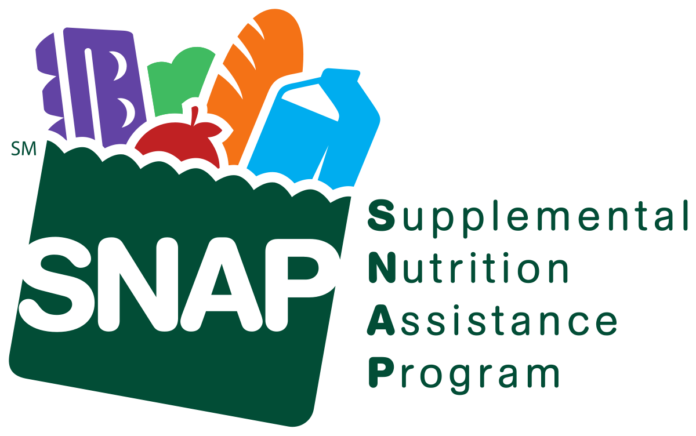HANCOCK COUNTY — Data recently released by the U.S. Census Bureau shows that in recent years, most people who were eligible for food stamps in Hancock County did not access them.
The report looked at the years 2017-2019 and used data from the Census Bureau and the U.S. Department of Agriculture to track the number of people in individual counties who were qualified for and who actually received benefits from the USDA’s Supplemental Nutrition Assistance Program, or SNAP, commonly referred to as food stamps.
Nearly 44 million people nationwide are assisted by SNAP during an average month, but a recent USDA report nationwide found that about 18% of people in the country who are eligible for the program do not access it.
That number is higher in Indiana, where only 58.2% of people eligible for SNAP benefits accessed them in 2019. In Hancock County, for the period of 2017 to 2019, only 34.7% of people eligible for assistance actually received it.
The issue appears to be most prevalent among seniors. Of those age 70 and older who are eligible for the program, only 8.9% were receiving the benefits, according to the data.
Access to SNAP benefits is available to low-income households that fall below the state’s poverty line. For example, a one-person household making less than $16,744 or a three-person household making less than $28,548 in total. To access benefits, people must also have a bank balance (savings and checking combined) of under $2,250; or under $3,500 if they share a household with an elderly or disabled person. SNAP benefits can only be used to purchase food.
Hancock County has a lower rate of SNAP eligibility than Indiana as a whole; about 11.4% of county residents qualify, compared to 22.2% of people in the state.
Though these numbers are estimates, they suggest that in Hancock County, low-income people are not receiving the food assistance to which they are entitled.
“Though the U.S. Department of Agriculture devotes considerable attention to customer service, a significant share of those eligible for SNAP benefits do not participate,” the Census Bureau said on its website. “Improving access at the local level requires an understanding of who participates and who does not.”
The Census Bureau data found that access rates in some surrounding counties are considerably higher. In Marion County, the access rate was 61.4%. The rate was 61.5% in Boone County, 59.8% in Shelby County, and 55.5% in Johnson County. The access rate in Hamilton County was similar to Hancock County, with 35.5% of eligible residents participating in the program.
In Hancock County, people who were eligible for the program but not participating in it were found to be of diverse ages. The most represented age groups were people ages 60-69, at 21.8%; and ages 18-29, at 21.4%. Most eligible non-participants lived in households with no children, and about 60% had private health insurance.
The highest age share among people who did receive SNAP benefits was children under 18, about 29.3% of participants, followed by those ages 50-59 at 22%.
A survey last year by the Indiana Family and Social Services administration found that food insecurity was the biggest unmet need among people seeking public assistance both in Indiana and in Hancock County. It also found that most people seeking public assistance were women, especially single women with children.
Tom Ferguson, the director of Hancock County Food Pantry, said he was surprised by the low percentage of people participating in SNAP. He said volunteers at the food pantry can explain to clients how to access SNAP, and information on the benefits is always available.
“We’ve tried to make that information accessible over the years,” he said.
There are a number of factors that might get in the way of access to SNAP benefits. The nonprofit Project Bread conducted a study that found lack of access to a computer, difficulty filling out the application, and wanting to avoid the stigma of accepting government help were top reasons for not using the program.
A study by the AARP found that eligible seniors who didn’t access SNAP cited reasons like unhelpful customer service at their local benefits office, lack of knowledge of the program, or the level of assistance from the program being too low to justify the effort of applying.
President Joe Biden recently signed a law that will increase the amount of assistance SNAP offers, with benefits for each person enrolled increasing by about $36 per month. The boost is slated to start Oct. 1.
A spokesman for the Indiana Family and Social Services Administration said it was hard to tell why Hancock County would have such a low participation rate compared to its neighbors.
“Our agency administers the SNAP program consistently across the state, staffing at least one Division of Family Resources office in each county,” James Gavin said in an email. “We also accept applications online at our statewide benefits portal, FSSABenefits.in.gov, and operate a single toll-free phone customer service number throughout the state: 800-403-0864. Therefore, it would be difficult for our agency to speculate about why the participation level in any one county would differ so dramatically from its neighboring counties.”
[sc:pullout-title pullout-title=”How to access SNAP benefits ” ][sc:pullout-text-begin]
If your household may qualify for SNAP benefits, you can find out more by calling the Hancock County Division of Family Resources at 1-800-403-0864, visiting its office at 1786 Melody Lane in Greenfield, or visiting its website at foodstamps.org/hancock-county-division-of-family-resources-food-stamps-office. The website also offers a calculator that allows you to check your eligibility for benefits.
If you live near the Greenfield office, you may be required to come into the office to complete an application; if not, representatives can help you apply in another way.
The Division of Family Resources office is open from 8 a.m. to 4:30 p.m. Monday through Friday.
[sc:pullout-text-end]

